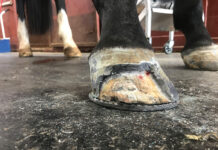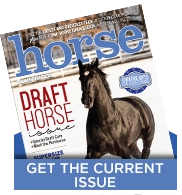If your horse is stopping at the jumps, it’s time to rewind to the very basics and start building up, one block at a time.
Although horses are naturally athletic and many can boldly jump over obstacles of astounding heights and widths, there are also those who aren’t quite so sure why they should put themselves in such a compromising position.
Jumping from a distance that is too long or too short puts the horse in a physically difficult spot, and he may not want to keep jumping. It’s also common for riders to cause further discomfort to the horse in the air after a bad distance, sometimes accidentally pulling the reins, falling back into the saddle too early, or falling forward onto the horse’s neck.
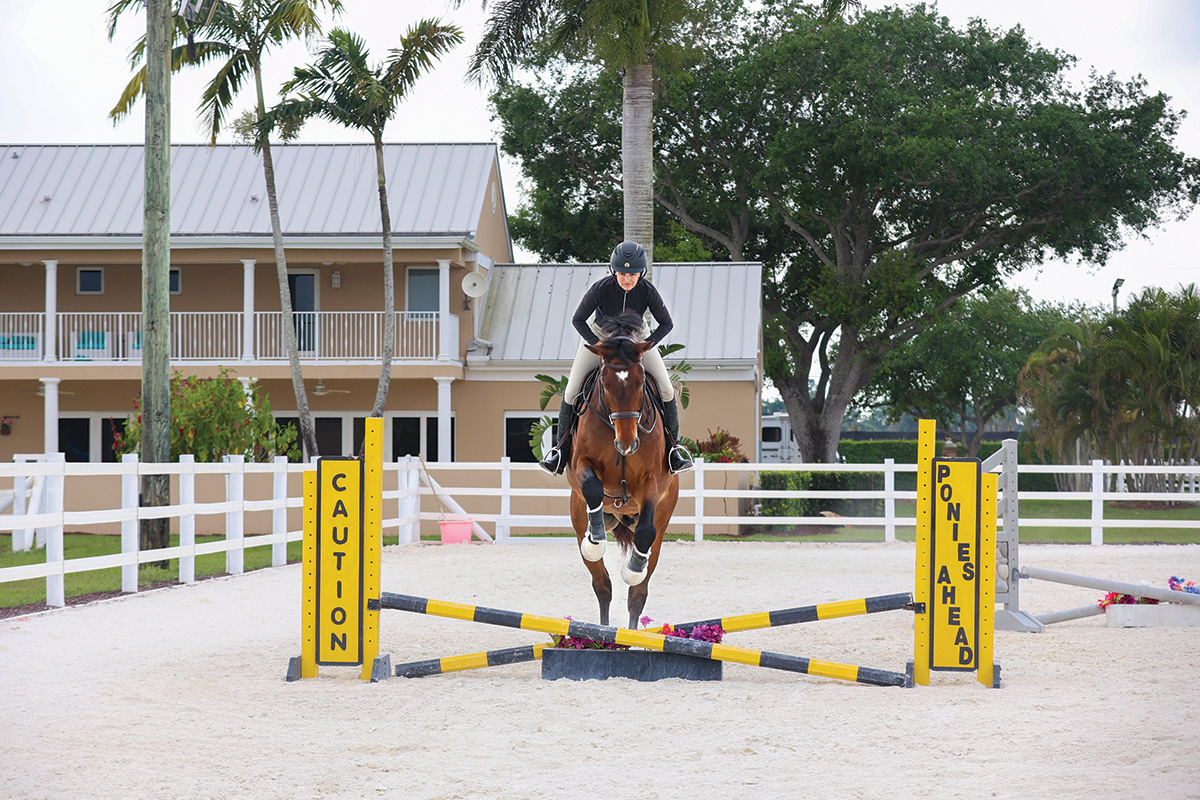
Allow Your Horse a Thorough Investigation
No matter the cause of the horse’s anxiety, the answer to getting him comfortable jumping again is to go one step at a time, creating enough new positive experiences to outnumber the negative experiences he has had.
Start by allowing your horse to investigate and sniff the jumps. Done at a walk either mounted or unmounted, this is easy to do at home but also a valuable aspect of schooling shows. The horses that benefit from this most are those that hesitate before leaving the ground or that jump with a peek when they do go over.
Once the jumps have been thoroughly inspected and sniffed at the walk, flat your horse very close to the jumps and their fillers. Trot and canter just alongside each jump, never pointing him at the jump, but making sure he feels relaxed having the jump close to him. If not, he may need to stop and sniff the jump again.
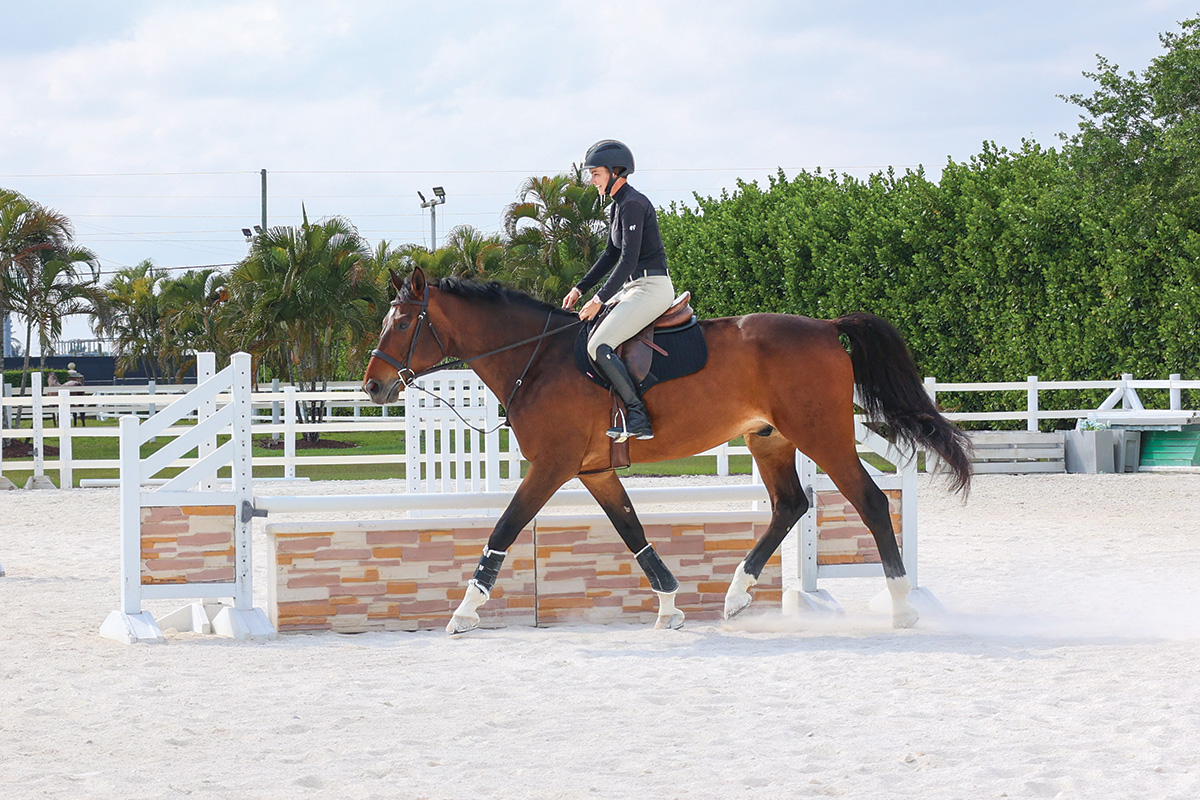
Next, place flower boxes or other fillers perpendicular to the plane of the jump in between the standards and off to the sides, creating a chute toward the center of the jump. Trot your horse back and forth through the fillers until he is moving confidently past them.
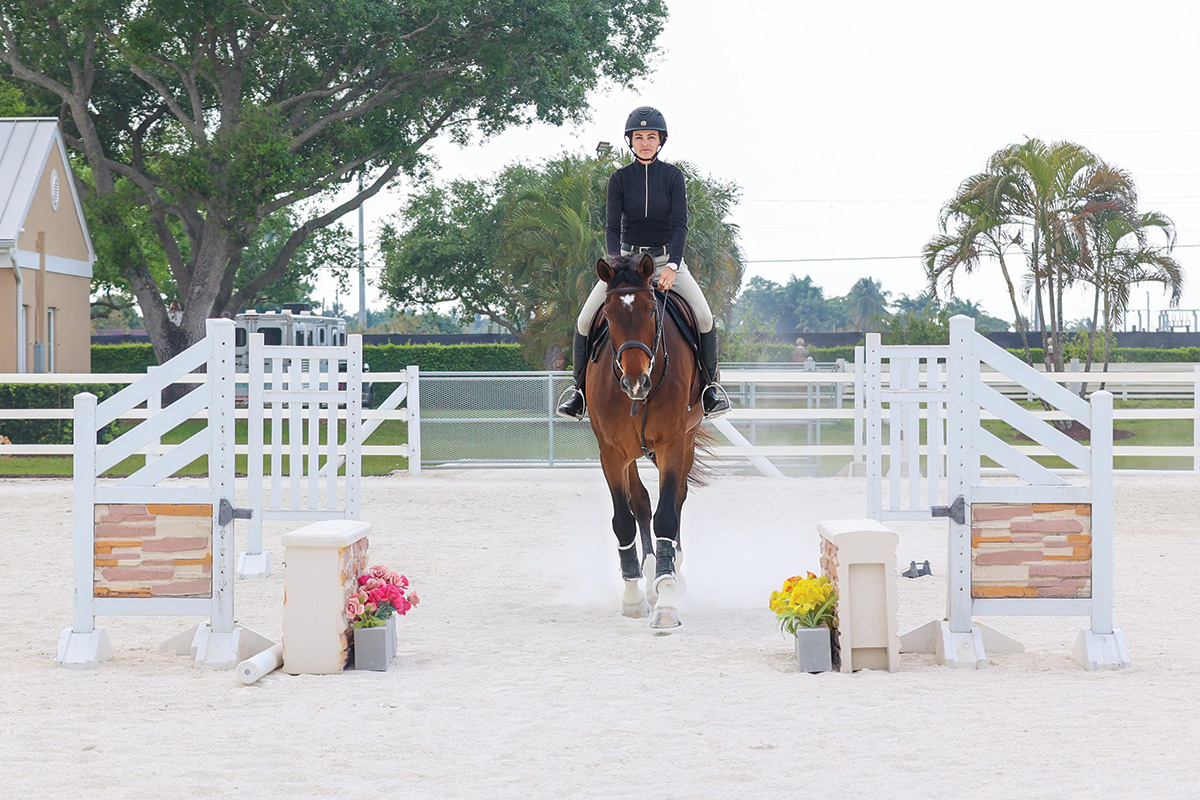
From there, make a small cross-rail with the rails and filler. At a schooling show, this may be where you need to start if taking out the fillers to trot through is impractical. This is also a good place to start for those horses that are more concerned with the distance than the jump itself.
Walk or slowly trot your horse over the jump so that he can have time to process the idea of jumping over filler and so that you can easily follow the motion of him going over the jump. Be sure to praise him when he goes over.
Once your horse is happily taking you to the jump (this is important—he should be moving confidently toward and over the fence), try cantering it. I would caution against making it any larger than a small vertical, as you risk another setback to his confidence. Remember, you must make a large library of positive experiences.
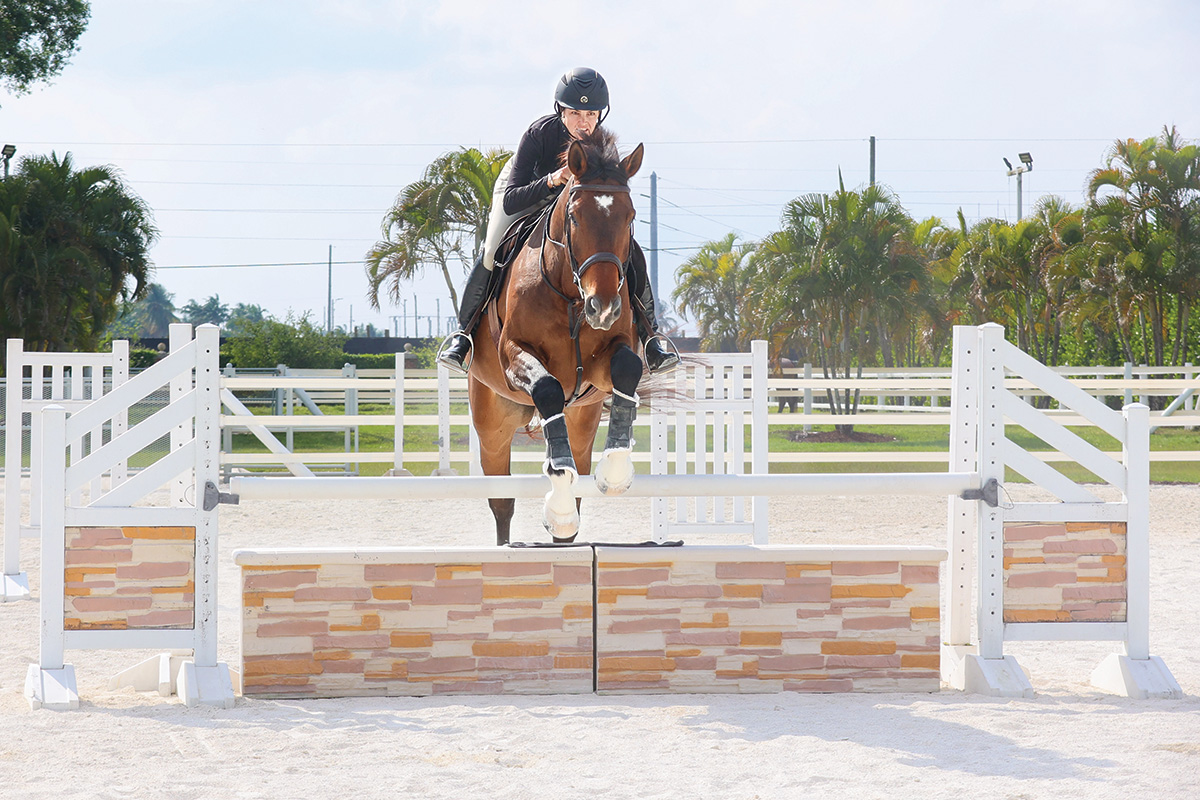
Stick to Small Stuff
For horses that have stopping issues at jumps rooted in too many missed distances, it’s important to honestly evaluate your riding. Your horse may need a tune-up with a trainer or more advanced rider for a few rides, or you may need to accept dropping down to jumping ground poles and small cross-rails until your eye becomes more consistent.
Adjustability of the canter is also crucial for these horses so that you become more familiar with your horse’s proper jumping canter and so that the horse is well-versed at moving forward off of your leg and coming back to your hand.
Some horses may have trouble with combinations or lines specifically, and the same concepts apply. Small jumps and a patient rider will do the trick over time, and it’s important to keep encouraging the horse to go forward, even when the striding is not quite right, so that he eventually gets the confidence to open up his step.
When the jumps are small, it’s completely fine for a horse to add a step, whether it’s two strides in what should have been a one stride, or six in a five, especially when the horse has a history of refusals.
Eventually, with repetition, he will begin to get the correct striding, but this is another process that should not be rushed if you want the lesson and the confidence to stick. Take the time to meet your horse where he’s at and build his confidence back up piece by piece.
This article about training a horse that’s stopping at the jumps appeared in the August 2023 issue of Horse Illustrated magazine. Click here to subscribe!

